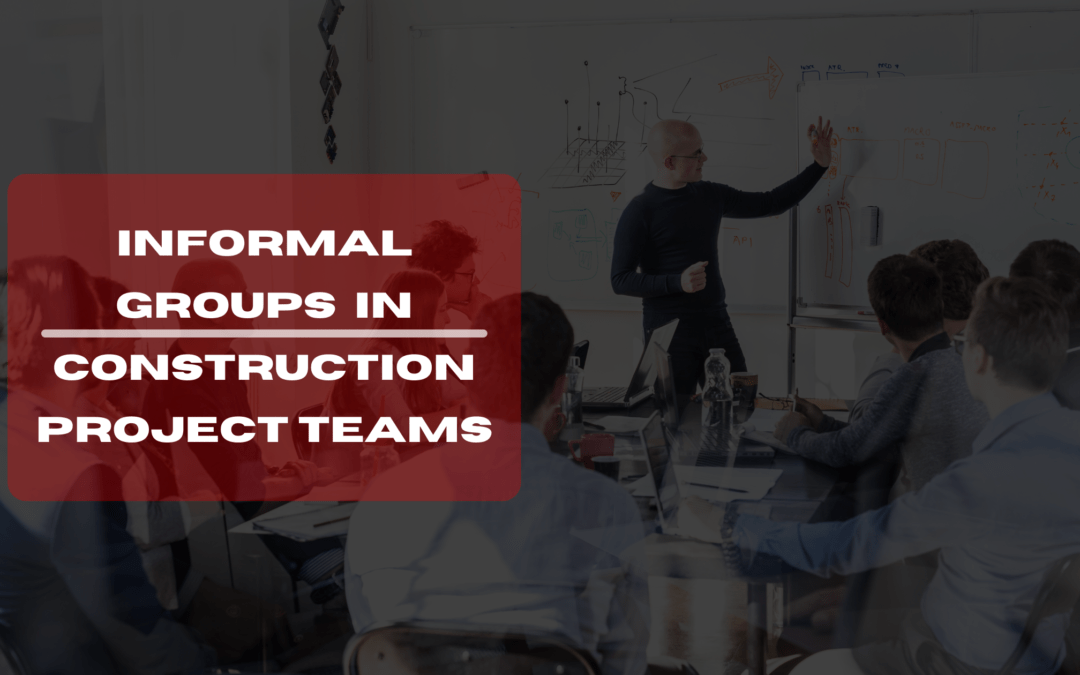Informal Groups in Construction Project Teams
In the intricate world of construction project management, teams are the driving force behind successful project execution. While formal structures and hierarchies are essential, it’s crucial not to underestimate the power of informal groups within these teams. Informal groups, often formed based on shared interests, backgrounds, or experiences, can significantly influence team dynamics and project outcomes.
Table of Contents
Understanding Informal Groups
Informal groups emerge naturally within construction project teams, shaped by commonalities and personal connections among team members. These groups often serve social or emotional needs, providing support, camaraderie, or a sense of belonging. Informal groups are characterized by voluntary membership, fluid boundaries, and a lack of formal leadership, operating alongside the official organizational structure.
The Roles of Informal Groups
Social Support
Informal groups offer emotional support to team members, helping them cope with the pressures and challenges of construction projects. This support enhances overall team well-being, fostering a positive work environment.
Communication Channel
Informal groups serve as informal communication channels. Team members within these groups may share project-related information or insights more freely, facilitating information flow throughout the team.
Conflict Resolution
Informal groups can play a crucial role in resolving conflicts within the team. They often serve as mediators, helping to address disputes and promote understanding among team members.
Knowledge Sharing
These groups can be treasure troves of tacit knowledge and best practices. Team members share their expertise and experiences, contributing to knowledge dissemination and improved project performance.
Challenges and Considerations
While informal groups can bring significant benefits, they also present challenges that project managers and HRM professionals must consider:
- Exclusivity: Informal groups can sometimes become exclusive, potentially leading to feelings of exclusion among other team members. Inclusivity is key to maintaining a harmonious team environment.
- Potential for Cliques: Informal groups may evolve into cliques, which can disrupt team cohesion. Balancing informal and formal interactions helps mitigate this risk.
- Balance with Formal Structure: Striking a balance between recognizing the value of informal groups and maintaining the project’s formal structure and hierarchy is essential.
- Leadership: While informal groups lack formal leadership, identifying influential individuals within these groups and leveraging their influence positively is important for project managers.
Realizing the Power of Informal Groups
“Alone we can do so little; together we can do so much.” – Helen Keller
The above quote by Helen Keller underscores the importance of collaboration and teamwork in achieving remarkable outcomes. In construction project teams, both formal and informal structures are essential. Informal groups, driven by a shared sense of purpose and camaraderie, can enhance team cohesion, communication, and overall project success.
Consider a scenario where a construction project faces unexpected challenges. The informal groups within the team, bonded by trust and shared experiences, can quickly adapt and find innovative solutions. They provide a vital support system for individual team members, boosting morale during challenging times.
Embracing the Balance
Project managers and HRM professionals should embrace the balance between formal and informal interactions within construction project teams. Recognizing and acknowledging the existence of informal groups can lead to a more harmonious and productive team environment.
By fostering an atmosphere where both formal and informal structures complement each other, construction project teams can harness the full potential of their diverse talents and experiences. When individuals feel supported, connected, and motivated, they are more likely to contribute their best to the project’s success.
In conclusion, informal groups are not mere social cliques within construction project teams; they are valuable assets that can significantly impact team dynamics and project outcomes. Recognizing their roles and managing them effectively can create a more cohesive, communicative, and successful team, ultimately leading to the successful execution of construction projects.
As you navigate the dynamic world of construction project management, remember that it’s not just about bricks and mortar; it’s about the people who bring these structures to life, working together to achieve greatness.
Happy building!

